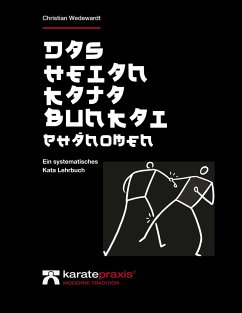This book is aimed at both the experienced Karate student and those just starting up in finding their way through the theoretical and historical background of Karate and in the practice of the so-called "secret techniques".In reading the book it becomes easy to see Karate's relationship to other Asian Martial Arts systems. Its content includes Basic Techniques, Tuite (Lever) Techniques, Chin Na-Techniques (Hold and Control), Nage Waza (Throws), Shime Waza (Strangling Techniques) and Kyusho (weak points) Techniques. In this book we have tried to analyze Tuite and Kyusho Techniques from a modern anatomical point of view and to this aim have put together a new type of graphic illustration. At its hub is the Karate Kata, which contains all of the techniques mentioned above and which is invaluable for daily training once the various levels of the Bunkai (application) have been understood. The depth of these levels of understanding is layered according to the Omote (obvious interpretation) for the beginner and the Chuden Techniques (middle level) for the more advanced. The hidden, or secret, techniques open themselves up to the higher Master levels, which are described as Okuden.








